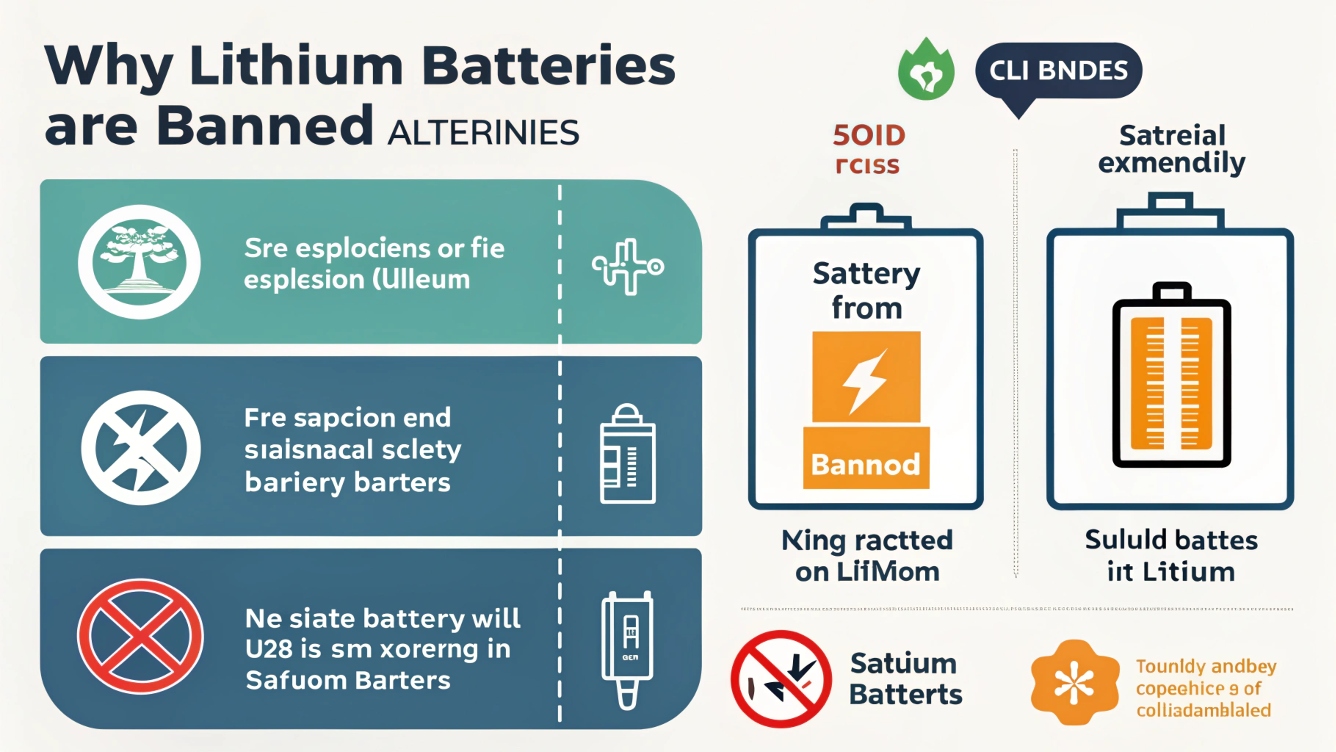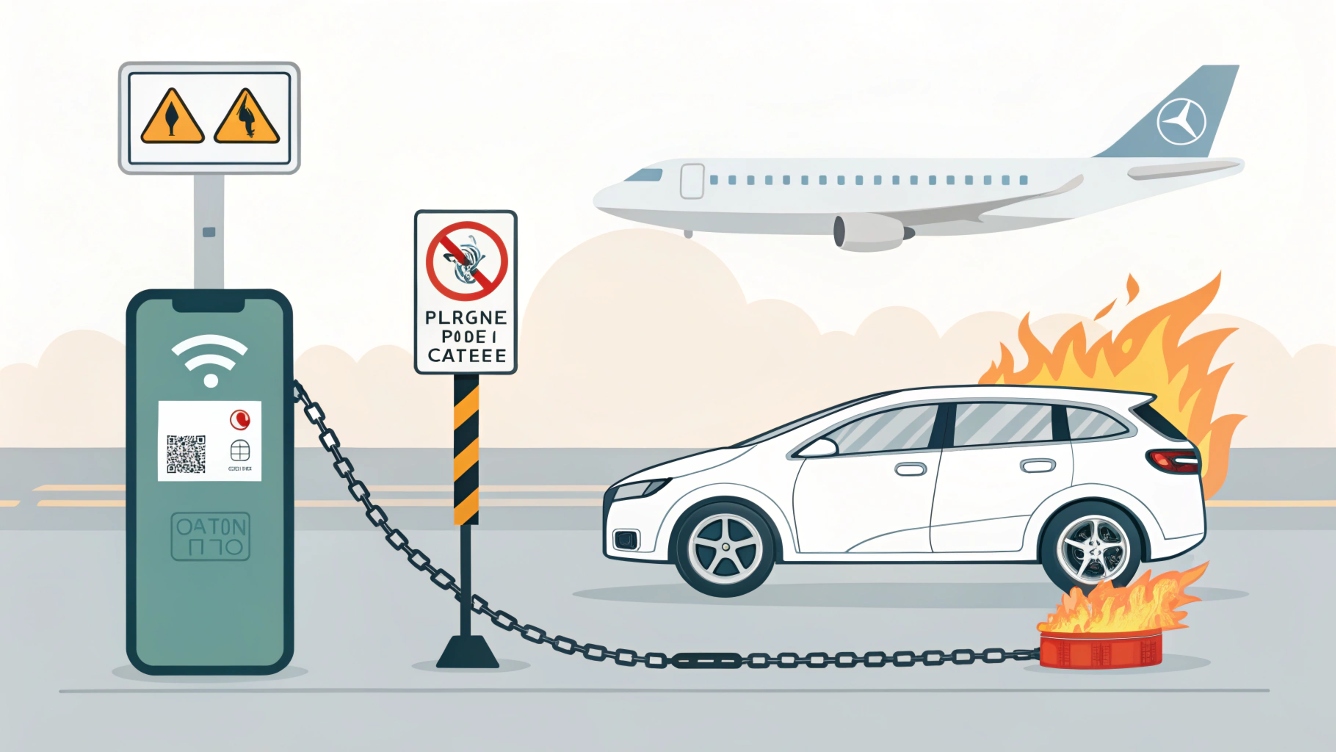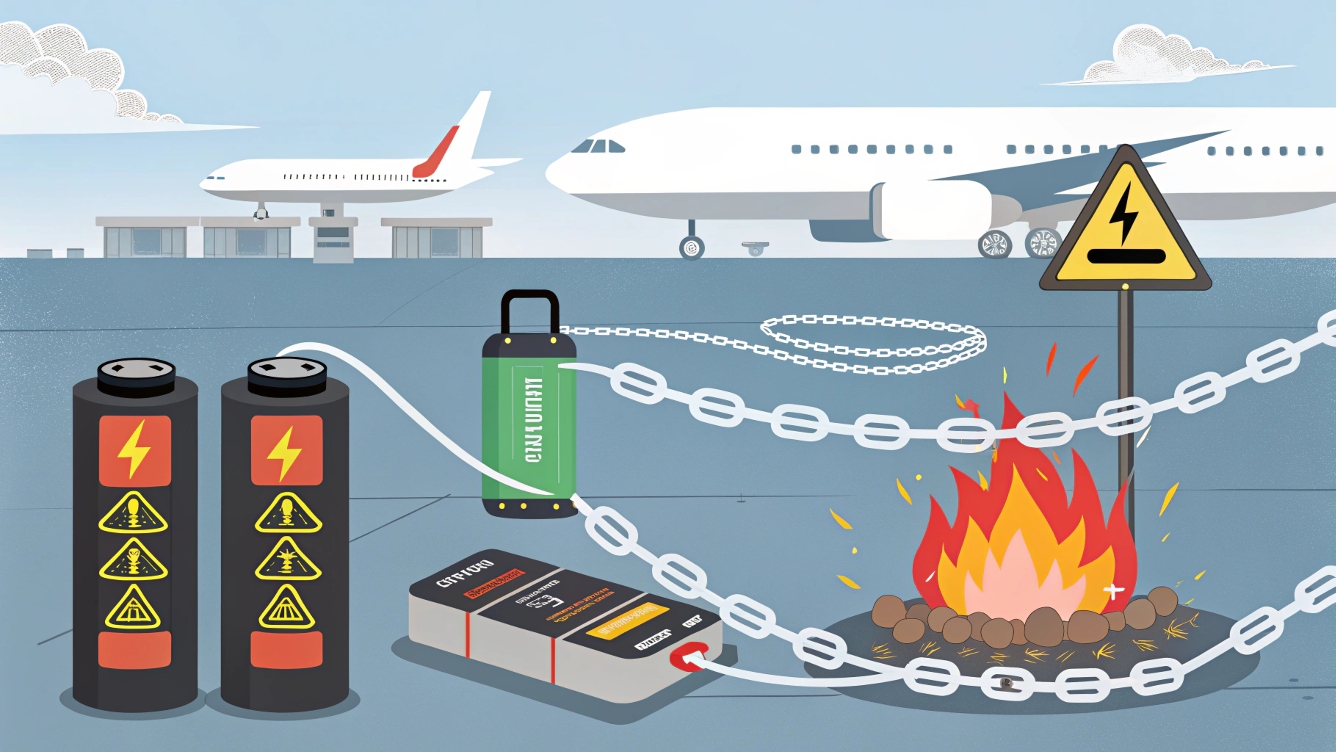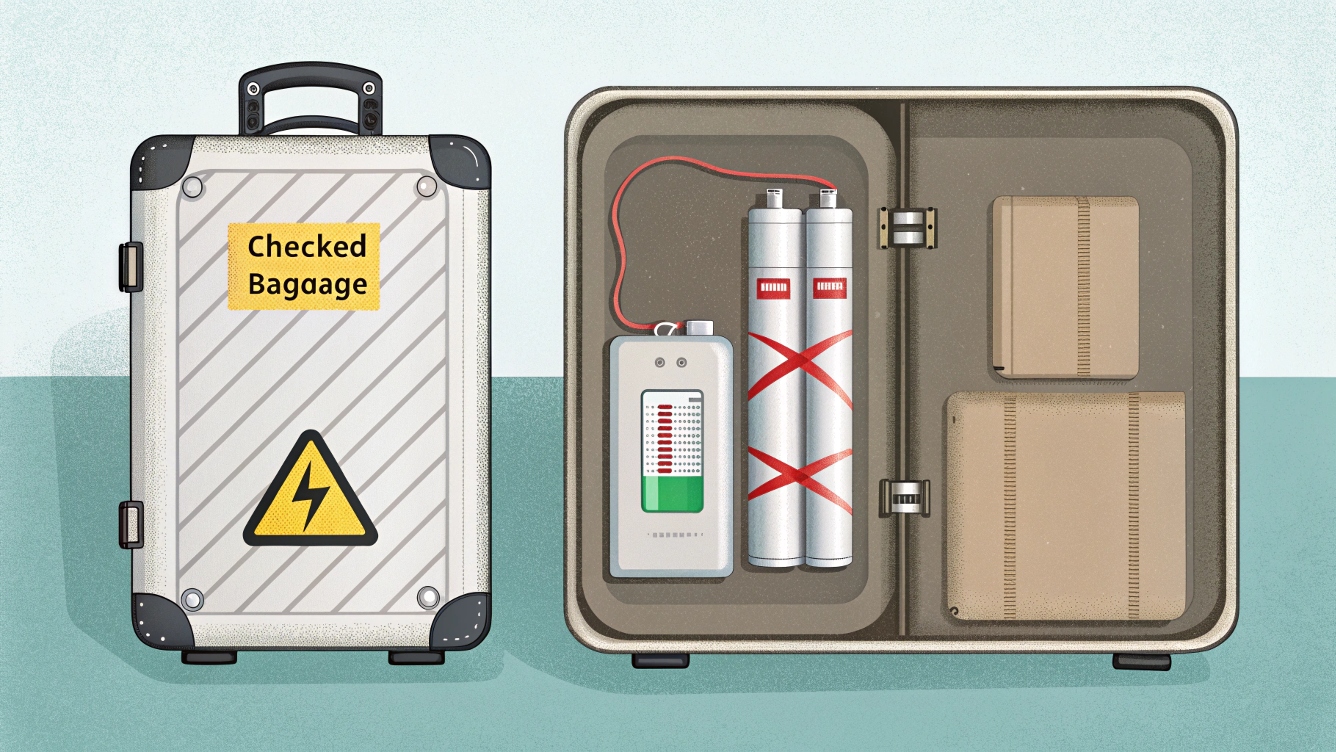为什么禁止锂电池? 安全风险和可持续替代方案
锂电池禁令后面的火灾危险
锂电池为从智能手机到电动汽车的所有功能, 但是它们在运输中的风险(尤其是飞机上)导致了严格的规定. 核心问题? 热失控, 链条反应过热会触发火灾或爆炸. 这就是航空公司破产的原因:引用[1]:引用[6]:
- 易燃电解质: 锂离子电池使用液体电解质,在压力下轻松点燃.
- 压力增加: 受损的细胞释放气体, 引起肿胀和潜在的破裂.
- 级联失败: 单个故障的电池可以点燃相邻的单元, 如货机事件中看到的.

在 2025, IATA的更新 危险货物法规 (DGR第66版) 运输中强制性的锂电池的费用为≤30%,以降低火灾风险:引用[1]:引用[7].
锂电池限制: 禁止什么,为什么
航空特定规则
- 检查行李: 大多数航空公司禁止松散的锂电池 >100WH由于无监督的火灾风险而在托运行李中:引用[2].
- 电力银行: 仅限于27,000mAh (99.9瓦时) 在航班上; 较大的单位需要航空公司批准:引用[3].
电池损坏: 肿胀或泄漏的电池被普遍禁止航班.

更安全 多种电池 新兴的技术
1. 固态电池
用固体聚合物代替液体电解质, 这些电池消除了火灾风险,并提供2倍的能量密度. 丰田计划通过 2027:引用[2].
2. 钠离子电池
钠的丰度和稳定性使其成为锂的选择. 新的联合国代码 (例如, 和 3551) 将钠离子包分类用于更安全的航空运输:引用[7].
3. 模块化电池系统
我们的 模块化储能套件 让用户将大电池分成较小, 合规单位. 例如:
- 10KWH系统→四个2.5KWH模块 (每个 <100瓦时, 航空公司安全).
如何遵守 2025 锂运输规则
对于消费者
- 充电限制: 在飞行前保持电池≤30%充电:引用[6].
- 保护包装: 使用3米堆栈测试的未认证的盒子 (商业货运):引用[7].
对于企业
- 标签更新: 用显示联合国数字的“电池”标签代替“锂电池”标签 (例如, 和 3556 用于锂驱动的车辆):引用[7].
- 文档: 获得高容量电池的运营商批准 (>100瓦时) 2025年后:引用[1].
太阳能解决方案: 减少对风险电池的依赖
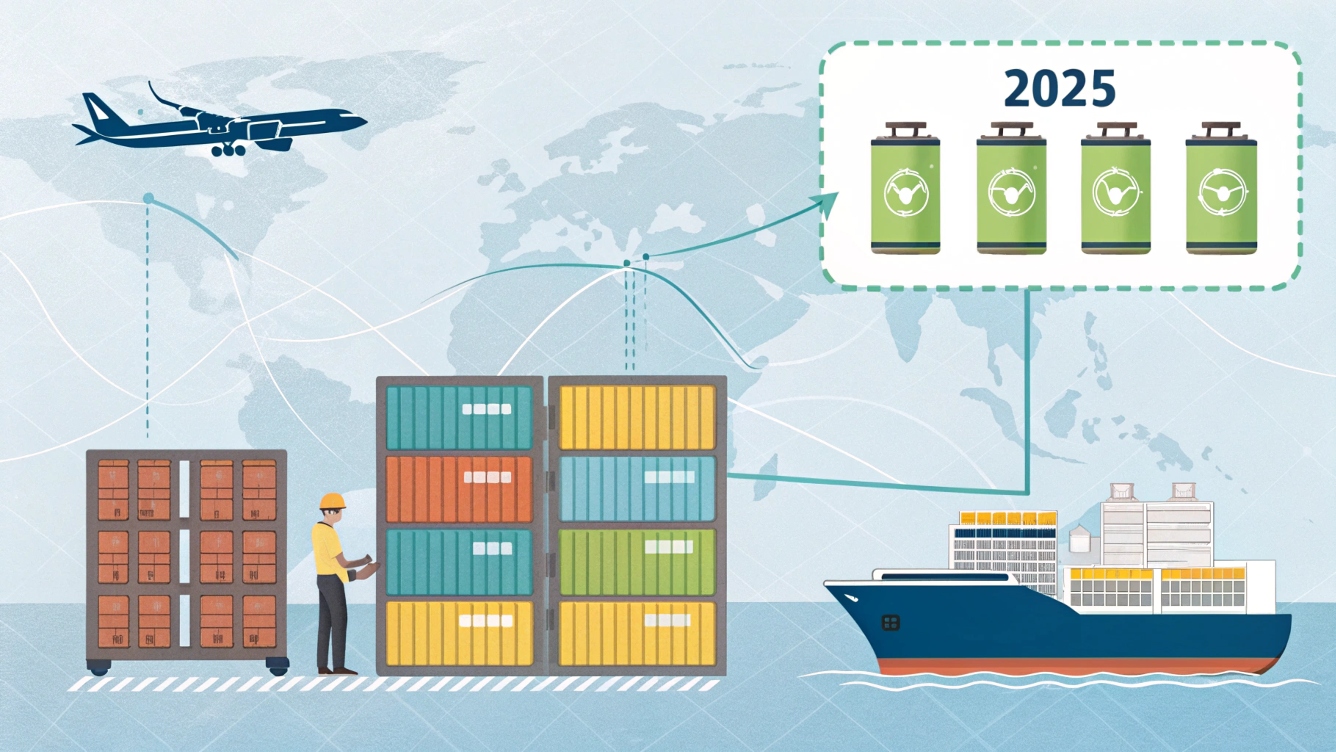
配对太阳能电池板 与太阳能兼容的电池组 (像我们一样 离网太阳能套件) 最小化锂的依赖:
- 白天充电: 太阳能直接为设备提供动力, 减少电池周期.
- 混合系统: 将锂用于短期存储和流量电池以长期需求.
案例分析: 机舱老板切割锂的使用 60% 通过添加5kW太阳能电池板 + 2 钠离子备用单元.
储能的未来: 超越锂
| 技术 | 安全 | 能量密度 | 成本 ($/千瓦时) | 最好的用例 |
|---|---|---|---|---|
| 锂离子 | 缓和 | 150–250 WH/kg | 90–130 | 消费电子产品 |
| 固态 | 高的 | 300–500 WH/kg | 150–200 | 电动汽车, 航空 |
| 钠离子 | 高的 | 120–160 WH/kg | 70–100 | 网格存储 |
| 流电池 | 很高 | 15–25 WH/kg | 300–500 | 太阳能农场 |
数据来自行业报告和维基百科: 锂离子电池.
结论: 拥抱更安全 多种电池 为了安全的未来

锂禁令旨在防止灾难, 诸如固态和模块化系统之类的创新提供更安全的替代方案. 在GYCX太阳能, 我们优先考虑平衡功率和安全的技术 - 无论您是用小工具飞行还是为房屋供电.
下一步:
- 探索我们的防火电池盒,用于合规旅行.
- 与我们的 太阳的 + 存储套件.
- 看我们 安全教程 掌握电池处理.
参考
- 锂火风险: 维基百科: 锂离子电池.
- IATA法规: 来自 2025 DGR第66版指南.

